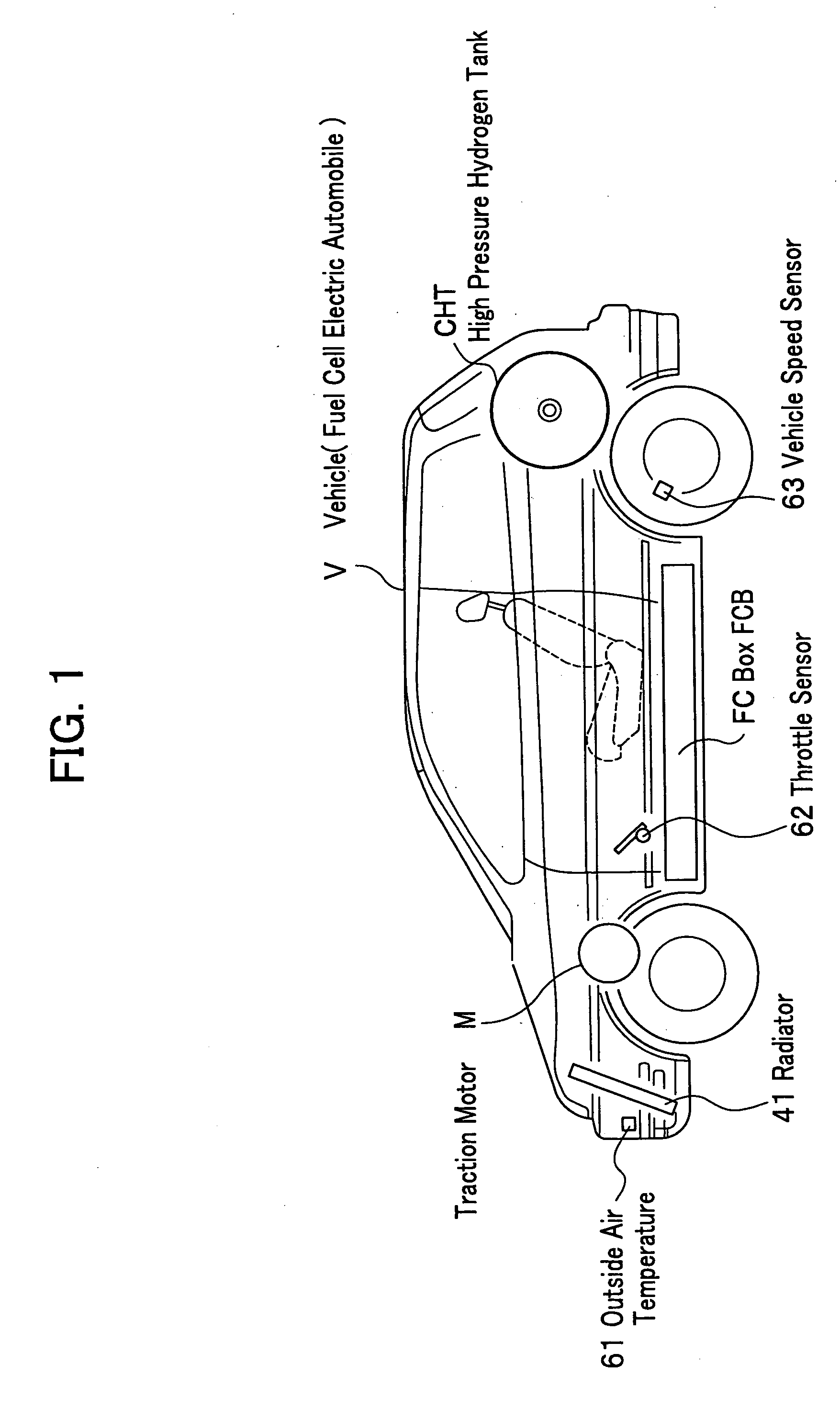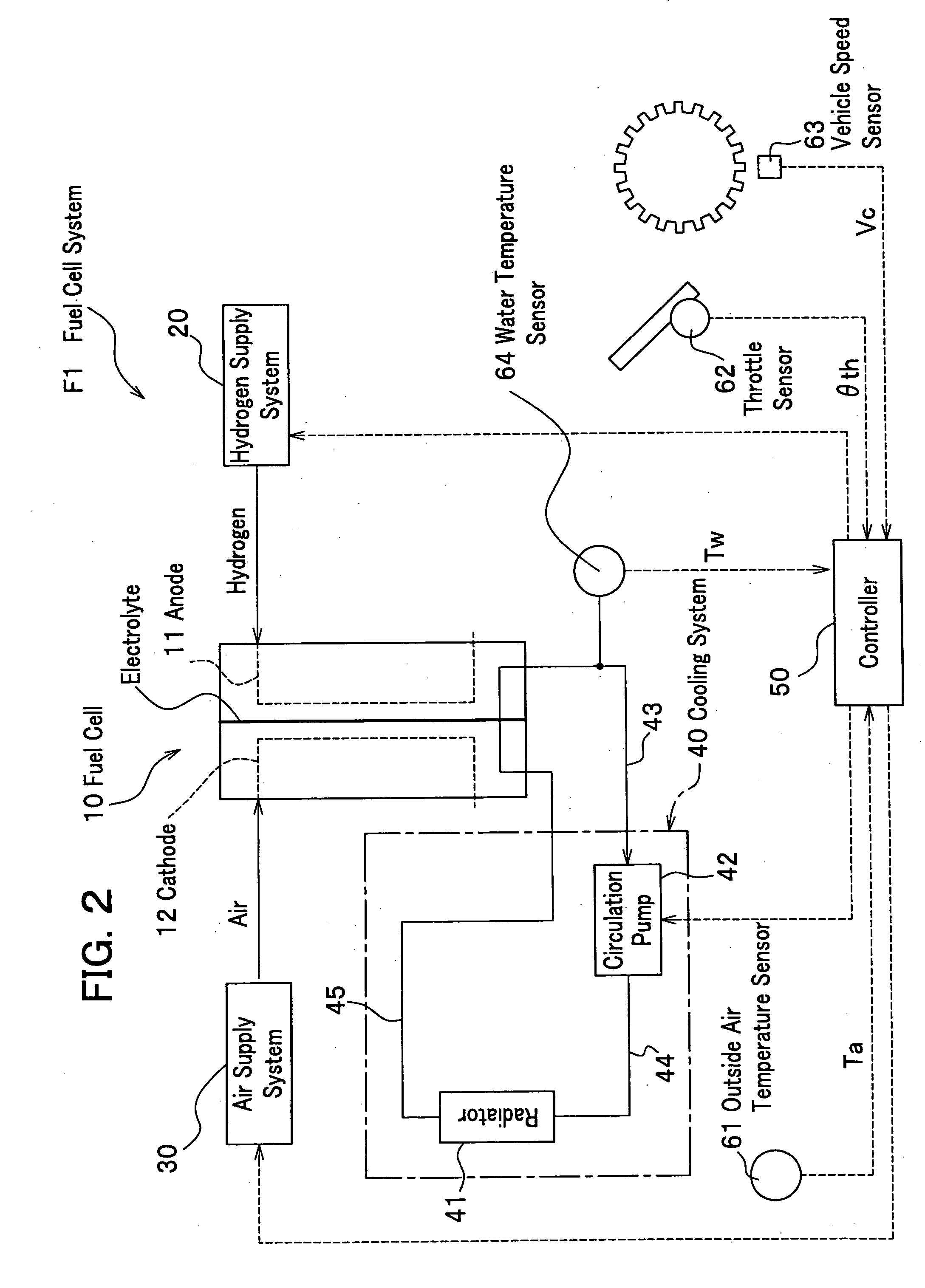Fuel cell system
- Summary
- Abstract
- Description
- Claims
- Application Information
AI Technical Summary
Benefits of technology
Problems solved by technology
Method used
Image
Examples
Embodiment Construction
[0017] Here will be described an embodiment in detail where the present invention is applied to a fuel cell electric automobile, referring to drawings as needed.
[0018]FIG. 1 is a partial perspective side view of a vehicle where a fuel cell system related to an embodiment of the present invention is mounted; FIG. 2 is a schematic configuration diagram of the fuel cell system related to the embodiment of the present invention.
[Vehicle Configuration]
[0019] Firstly will be described a vehicle. In a vehicle V shown in FIG. 1, an FC box FCB is mounted under a floor of a passenger's seat and a fuel cell 10 is housed in the FC box FCB (see FIG. 2). In addition, a traction motor M is mounted on a front area and a high pressure hydrogen tank CHT is horizontally mounted above rear wheels of the vehicle V. In addition, the vehicle V comprises a radiator 41 for radiating heat in a fuel cell cooling loop at a vehicle body front area and an outside air temperature sensor (outside air temperatur...
PUM
 Login to View More
Login to View More Abstract
Description
Claims
Application Information
 Login to View More
Login to View More - R&D
- Intellectual Property
- Life Sciences
- Materials
- Tech Scout
- Unparalleled Data Quality
- Higher Quality Content
- 60% Fewer Hallucinations
Browse by: Latest US Patents, China's latest patents, Technical Efficacy Thesaurus, Application Domain, Technology Topic, Popular Technical Reports.
© 2025 PatSnap. All rights reserved.Legal|Privacy policy|Modern Slavery Act Transparency Statement|Sitemap|About US| Contact US: help@patsnap.com



